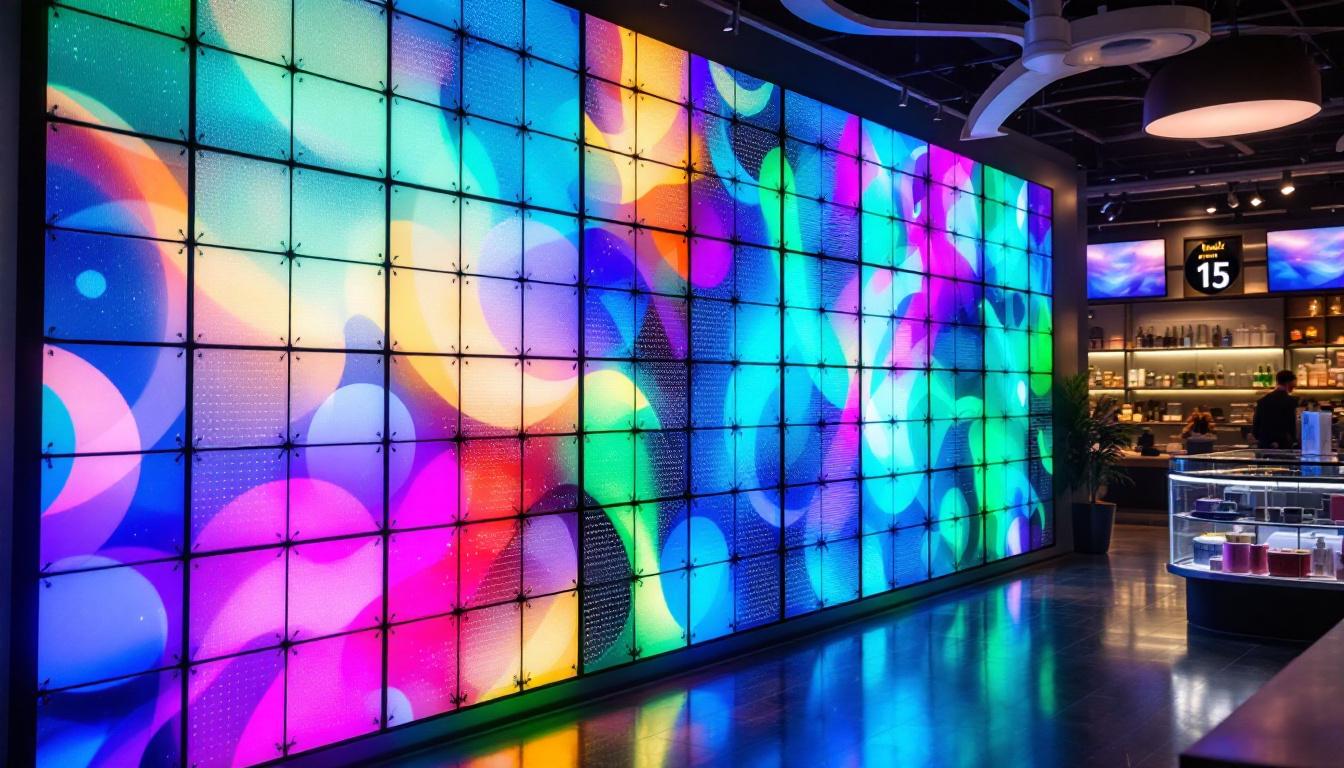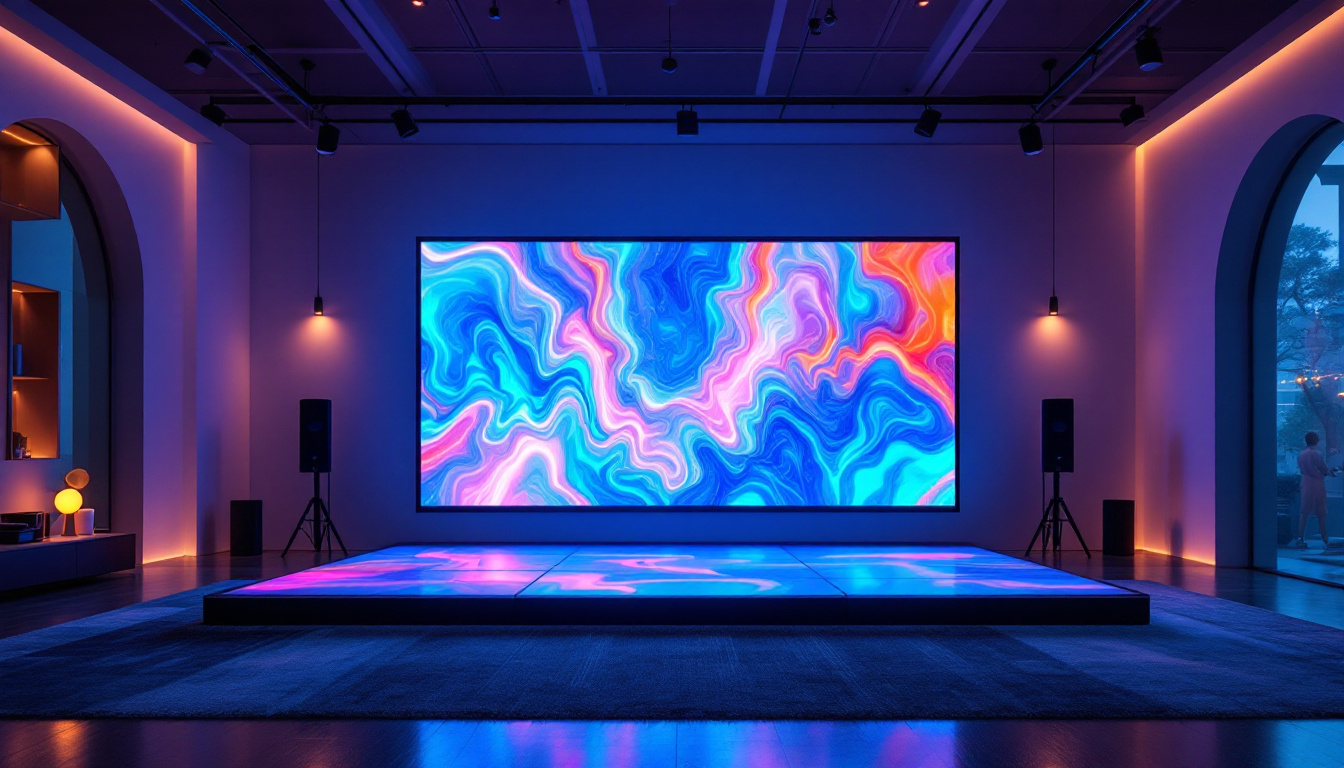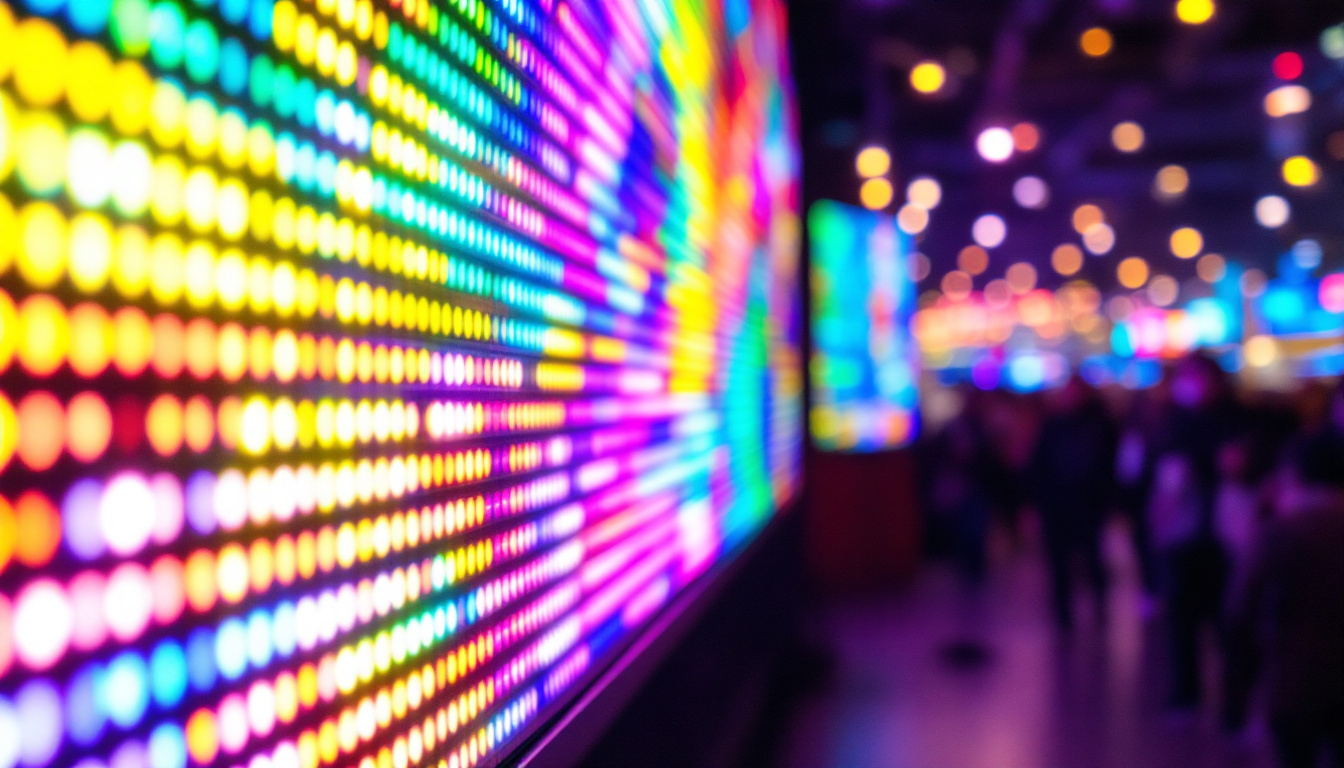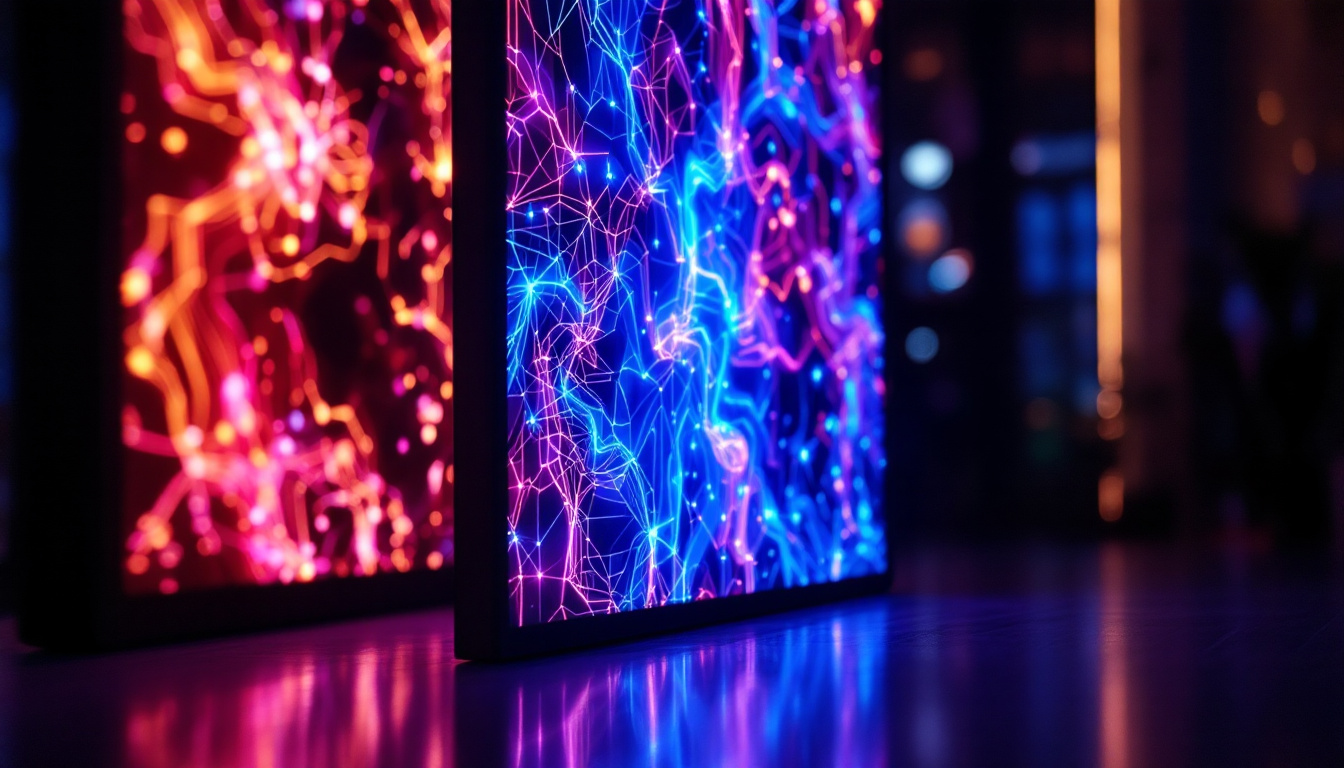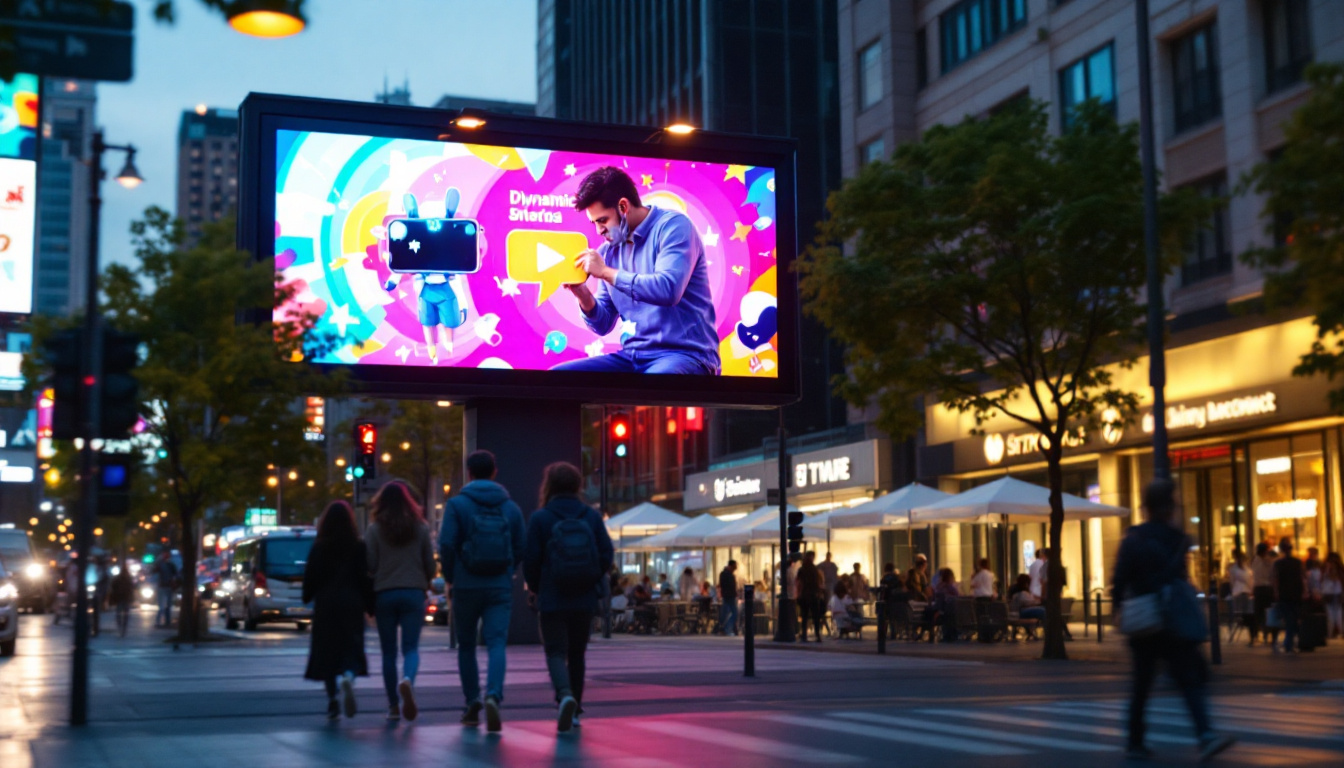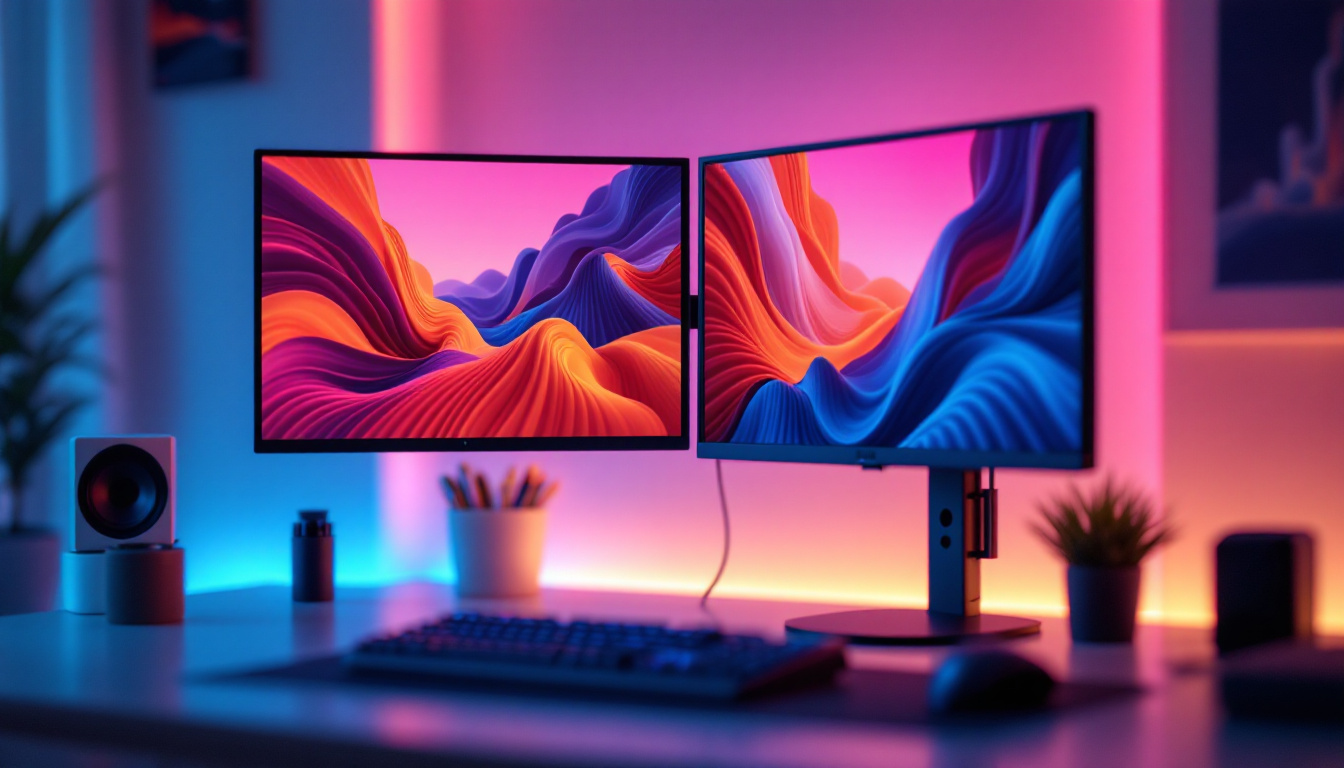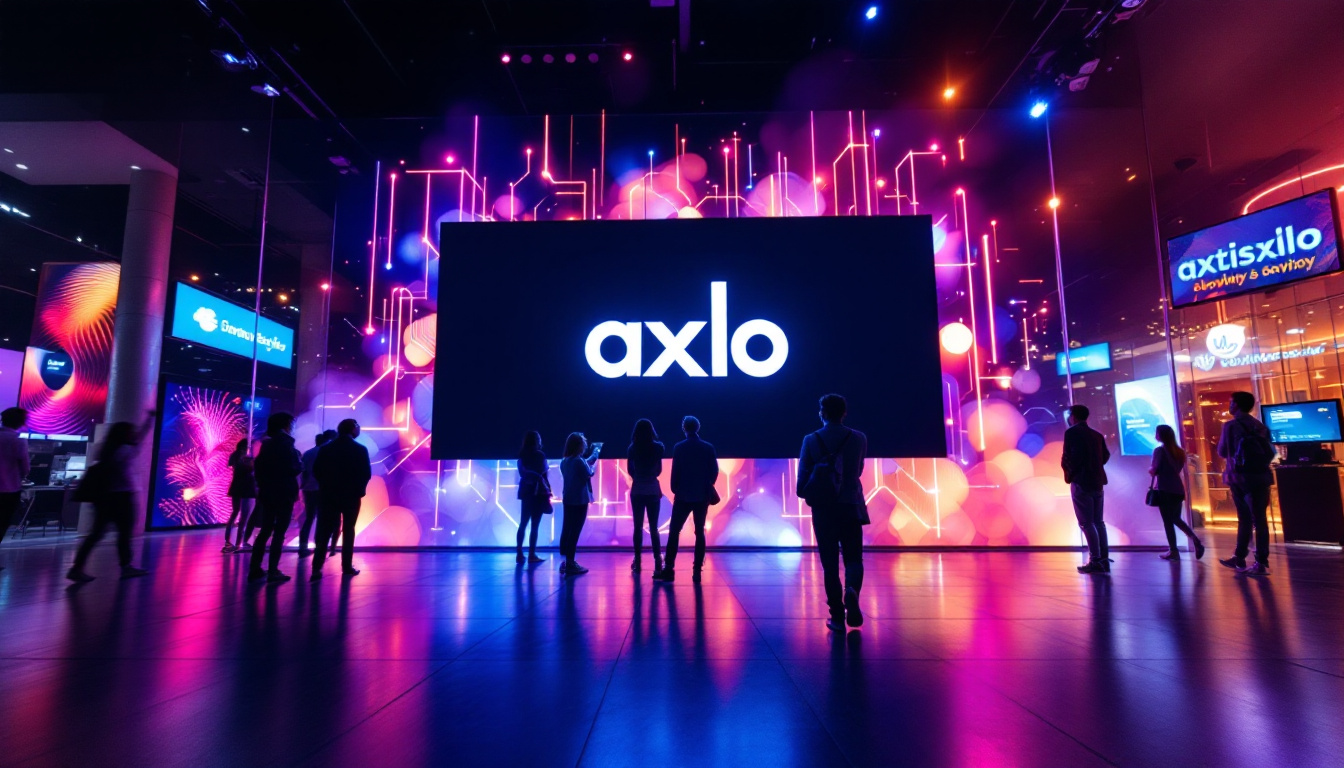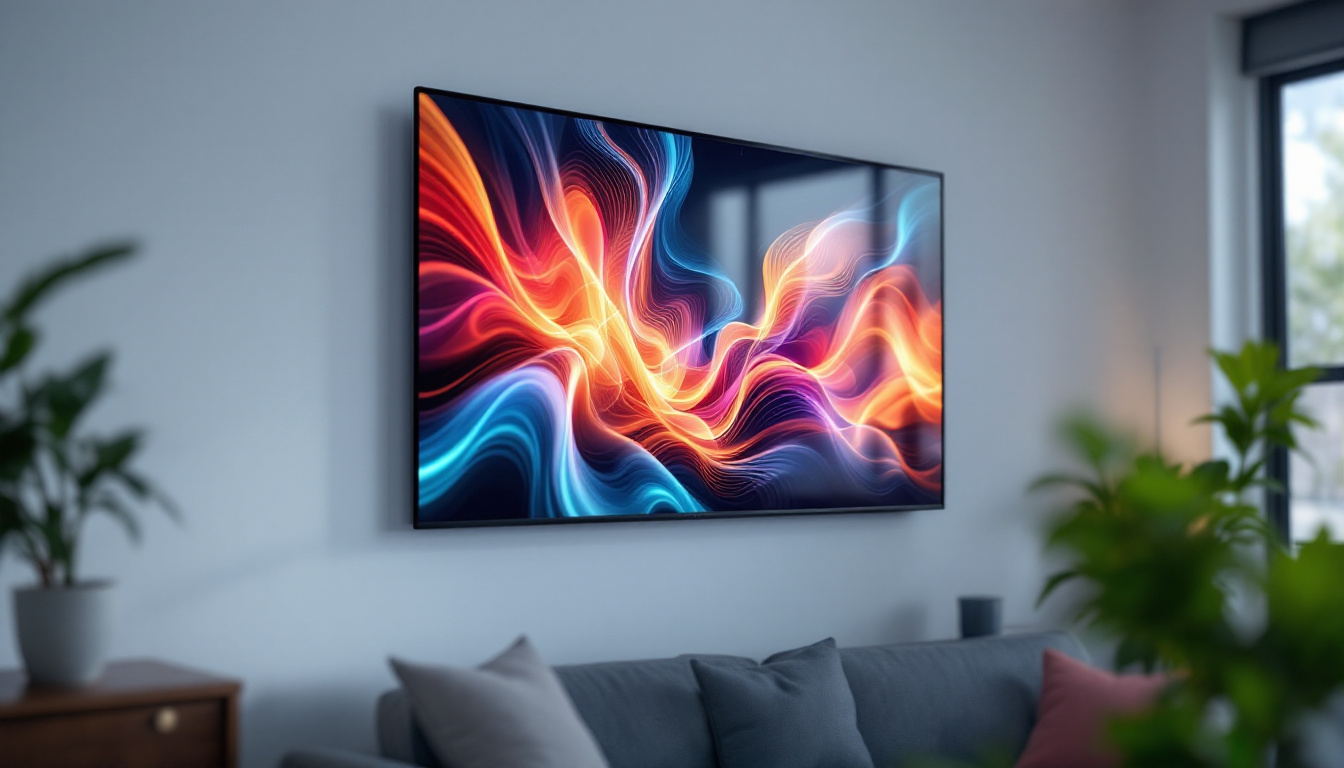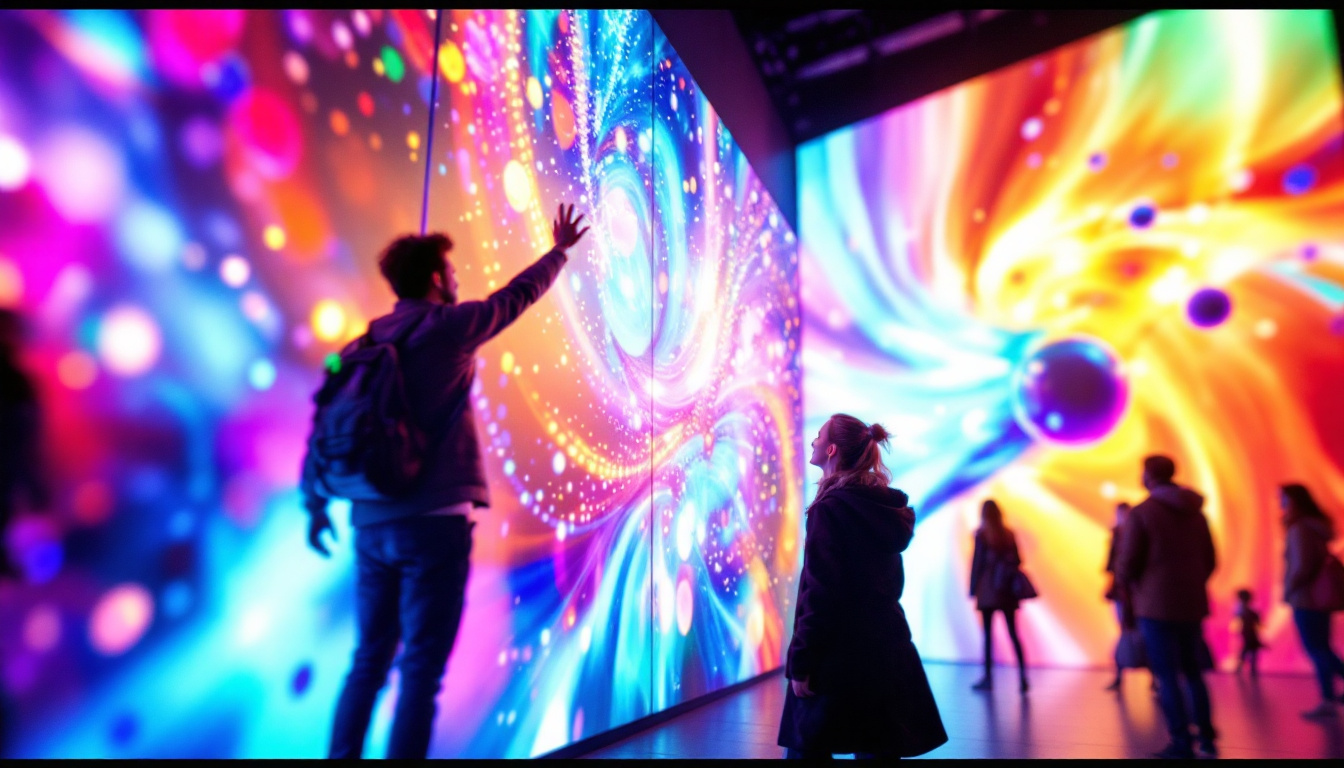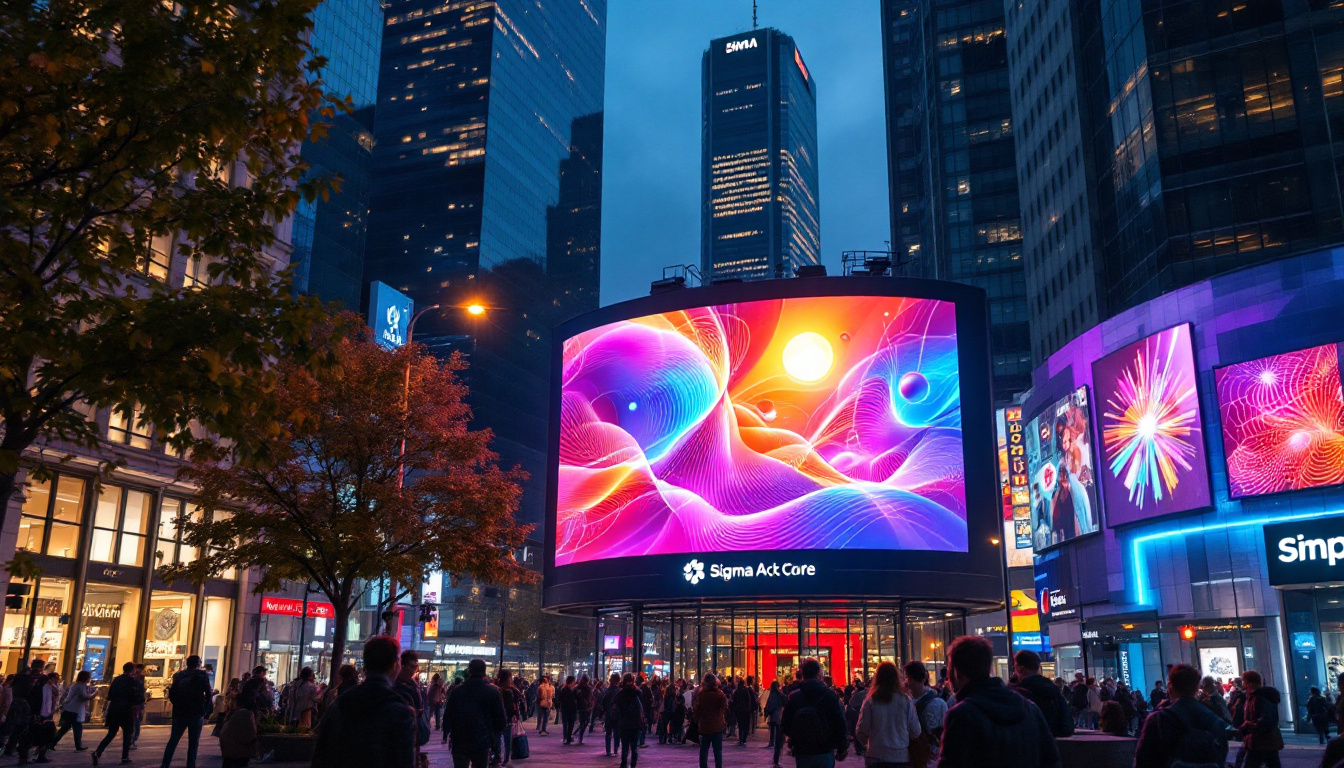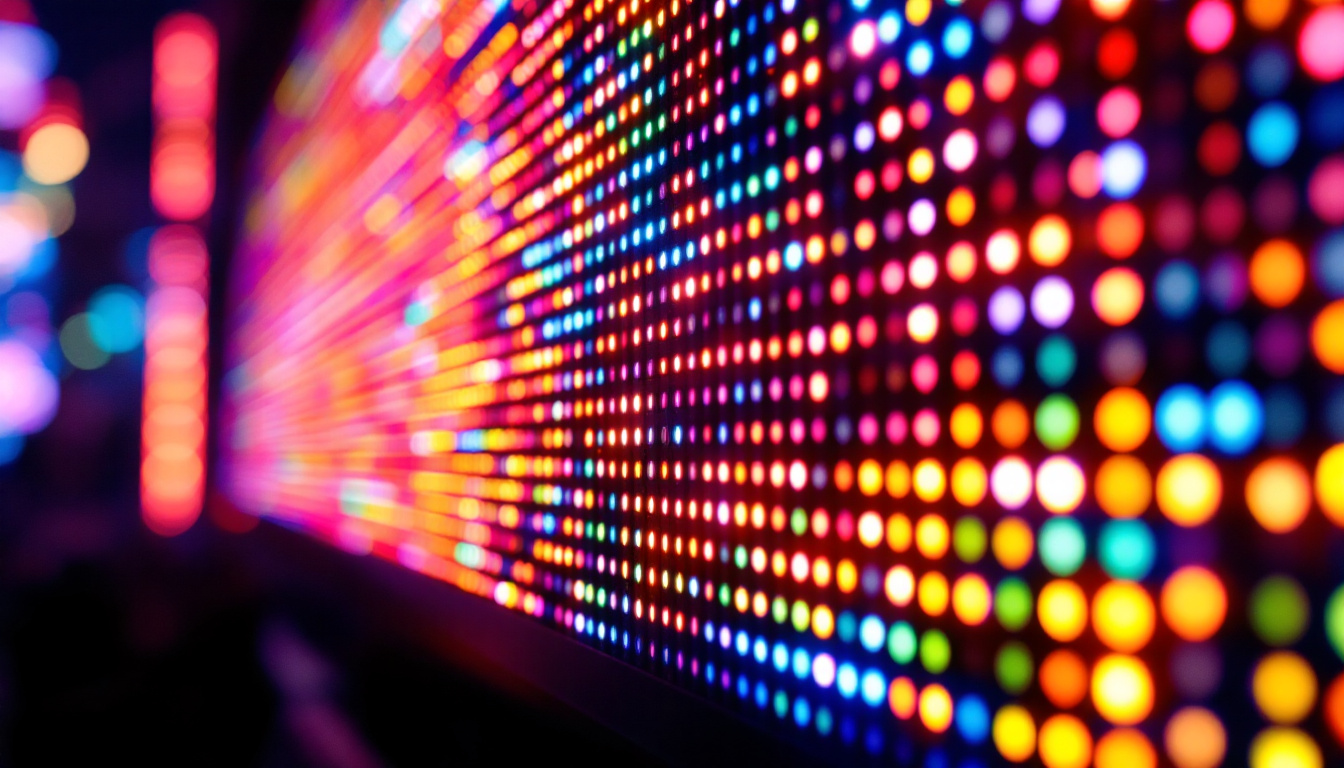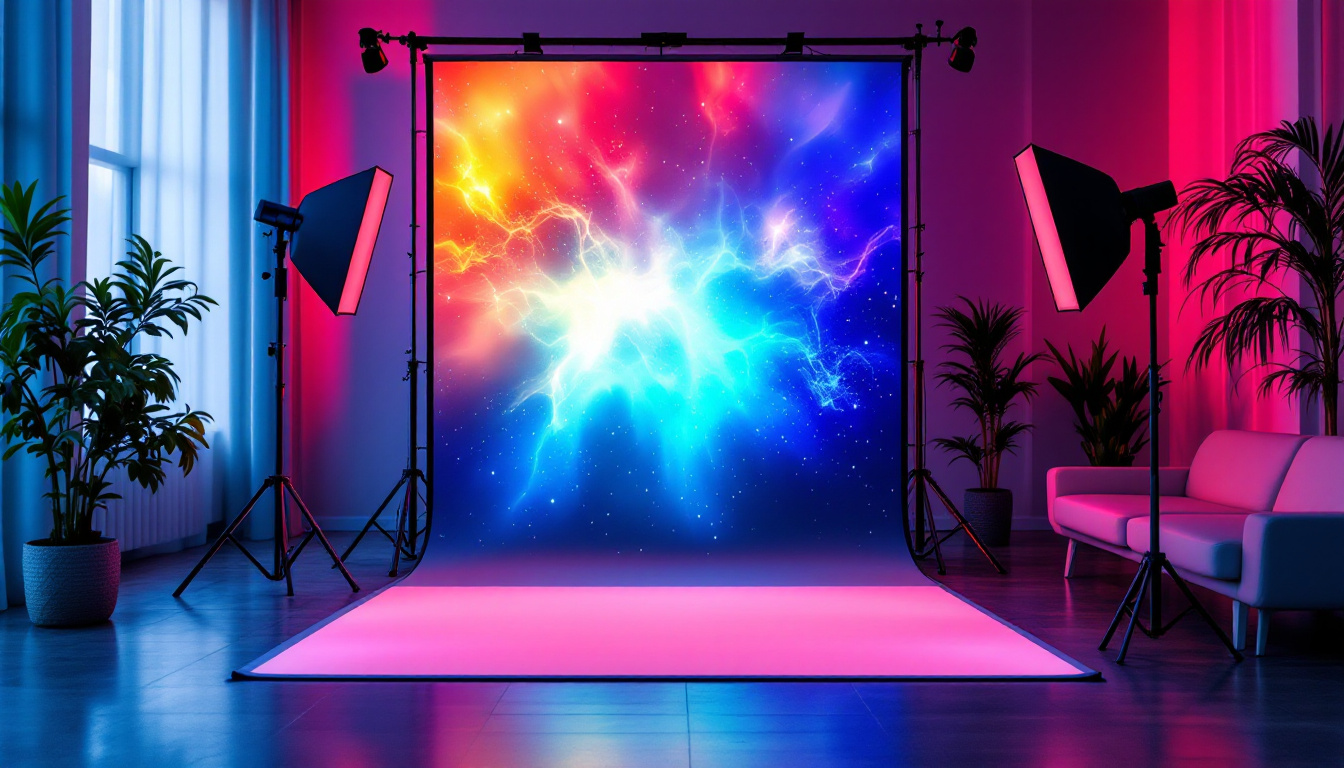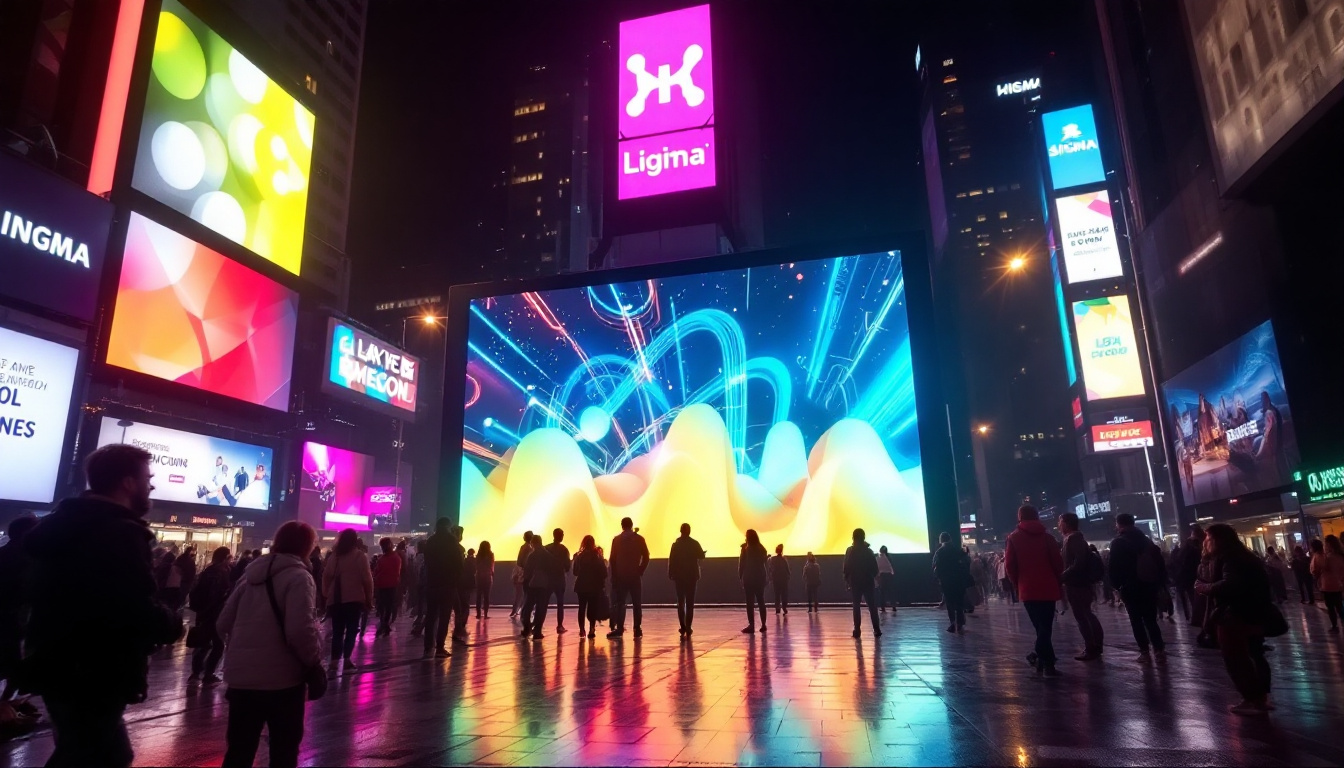In the rapidly evolving world of visual technology, LED displays have become a cornerstone for advertising, events, retail, and architectural design. Among the many types of LED installations, grid wall panels stand out for their versatility, aesthetic appeal, and functional benefits. This article explores the concept of grid wall panels with LED displays, breaking down their technology, applications, and advantages to provide a comprehensive understanding for businesses, designers, and technology enthusiasts alike.
What Are Grid Wall Panels with LED Displays?
Grid wall panels embedded with LED displays are modular, grid-like structures designed to showcase dynamic visual content. Unlike traditional flat LED screens, these panels consist of a matrix or lattice framework where LEDs are integrated into the grid’s intersections or along its lines. This design allows for a unique blend of transparency, flexibility, and visual impact.
Typically constructed from lightweight materials such as aluminum or steel, these panels can be customized in size and shape, making them ideal for both indoor and outdoor environments. The LED components vary in pixel pitch, brightness, and color capabilities, enabling tailored solutions for different viewing distances and lighting conditions. Their versatility makes them popular in retail spaces, exhibitions, and even architectural installations, where they can transform a simple wall into an eye-catching focal point that engages viewers and enhances the overall aesthetic.
Moreover, the ability to easily update the content displayed on these panels allows businesses to adapt their messaging quickly and efficiently. For instance, a retail store can use grid wall panels to showcase promotional offers or seasonal collections, changing the visuals as needed to attract foot traffic. This dynamic aspect not only helps in maintaining customer interest but also allows for the integration of interactive elements, such as QR codes or touch-sensitive features, further enhancing the user experience.
The Technology Behind LED Grid Wall Panels
At the core of these panels is Light Emitting Diode (LED) technology, which uses semiconductor diodes to emit light when an electric current passes through them. The LEDs are arranged in a grid pattern, either as individual pixels or clusters, controlled by a central processing unit that manages the display content.
Modern LED grid panels often employ surface-mounted device (SMD) LEDs, which offer high brightness and color accuracy. The pixel pitch—the distance between the centers of two adjacent LEDs—can range from as fine as 1.5mm for close-up viewing to over 10mm for large-scale outdoor displays. This flexibility allows for crisp images and videos, even on unconventional grid structures. Additionally, advancements in LED technology have led to the development of energy-efficient options that consume less power while delivering superior brightness, making these panels not only visually appealing but also environmentally friendly.
Furthermore, many grid wall panels are designed with smart connectivity features, enabling integration with various digital signage platforms. This means that content can be easily managed remotely, allowing for real-time updates and the ability to schedule different displays throughout the day. This capability is particularly beneficial for businesses that need to keep their messaging fresh and relevant, as they can quickly respond to trends or customer feedback without the need for physical changes to the installation.
Applications of LED Grid Wall Panels
LED grid wall panels have found widespread use across various industries due to their adaptability and visual appeal. Their semi-transparent nature and modular design make them particularly popular in settings where traditional LED screens might be too bulky or obstructive.
Retail and Commercial Spaces
In retail environments, LED grid panels are used to create eye-catching storefront displays and interior walls that captivate customers. For example, luxury brands often incorporate these panels into their window displays to showcase dynamic advertisements without blocking natural light or visibility.
Commercial offices and lobbies also benefit from these panels as digital art installations or informational displays, enhancing brand presence while maintaining an open and modern aesthetic. The ability to change content easily allows businesses to keep their messaging fresh and relevant, adapting to seasonal promotions or new product launches. Furthermore, the interactive potential of these panels can engage customers directly, inviting them to explore products or services through touch or motion sensors.
Events and Entertainment
Concerts, exhibitions, and trade shows leverage LED grid panels for stage backdrops and immersive environments. Their lightweight and modular nature allow for rapid assembly and customization, which is essential in the fast-paced event industry.
Additionally, the transparency of grid panels enables creative lighting effects and layering, adding depth and dimension to visual presentations that traditional LED walls cannot achieve. Event planners can utilize these panels to create multi-dimensional experiences, where visuals can change in real-time based on audience interaction or music beats, enhancing the overall atmosphere. This versatility also allows for the seamless integration of live feeds, social media interactions, or even augmented reality elements, making events more engaging and memorable for attendees.
Architectural and Urban Design
Architects and urban planners use LED grid wall panels to integrate digital displays into building facades, bridges, and public spaces. This integration transforms static structures into dynamic canvases that can display art, information, or advertisements.
One notable example is the use of LED grids on skyscraper exteriors to create large-scale light shows that engage city residents and tourists, enhancing the urban experience. These installations not only serve aesthetic purposes but can also provide valuable information, such as public service announcements or event schedules, thereby fostering community engagement. Moreover, the energy efficiency of LED technology aligns with sustainable design principles, allowing cities to incorporate modern technology while reducing their carbon footprint. As urban landscapes continue to evolve, the potential for LED grid wall panels to redefine public spaces and enhance civic life is immense, paving the way for a more interactive and visually stimulating environment.
Advantages of Using LED Grid Wall Panels
The growing popularity of LED grid wall panels is driven by several key advantages that make them an attractive choice for a variety of applications.
Transparency and Light Transmission
Unlike traditional LED screens that block light and views, grid wall panels allow natural light and air to pass through, making them ideal for locations where openness is desired. This transparency also reduces the visual weight of the installation, preserving architectural integrity and sightlines.
Energy Efficiency and Brightness
LED technology is inherently energy-efficient, consuming significantly less power compared to older display technologies like LCD or projection. Grid panels optimize this efficiency further by using fewer LEDs per square meter due to their open design, while still delivering high brightness levels suitable for daylight visibility.
Customization and Scalability
The modular nature of grid wall panels means they can be tailored to fit virtually any space or design concept. Panels can be combined to create large-scale displays or used individually for smaller installations. This scalability is particularly beneficial for businesses looking to expand or modify their digital signage over time.
Durability and Maintenance
Constructed with robust materials and designed for easy access to LED modules, grid wall panels offer long service life and straightforward maintenance. Many panels are weather-resistant, making them suitable for outdoor use without significant performance degradation.
Key Considerations When Choosing LED Grid Wall Panels
While LED grid wall panels offer numerous benefits, selecting the right system requires careful consideration of several factors to ensure optimal performance and return on investment.
Pixel Pitch and Resolution
The choice of pixel pitch directly affects the display’s resolution and viewing distance. For indoor applications where viewers are close to the screen, a finer pixel pitch (1.5mm to 4mm) is preferable to maintain image clarity. Outdoor installations can use larger pixel pitches (6mm to 10mm or more) due to greater viewing distances.
Brightness and Contrast Ratio
Brightness levels must be sufficient to overcome ambient light, especially for outdoor or brightly lit indoor environments. High contrast ratios improve image depth and color vibrancy, contributing to a more engaging visual experience.
Installation Environment
Understanding the installation environment is critical. Factors such as wind load, humidity, temperature ranges, and exposure to sunlight influence the choice of materials and protective coatings. Some grid panels come with IP65 or higher ratings, indicating strong resistance to dust and water ingress.
Control Systems and Content Management
Advanced control systems enable seamless content management, real-time updates, and synchronization across multiple panels. Compatibility with various media formats and integration with existing digital infrastructure are important considerations for operational efficiency.
Future Trends in LED Grid Wall Technology
The LED display industry continues to innovate, and grid wall panels are no exception. Emerging trends promise to enhance their functionality and aesthetic potential even further.
Higher Resolution and Miniaturization
Advancements in LED manufacturing are pushing pixel pitches to sub-millimeter levels, enabling ultra-high-definition displays on grid panels. This miniaturization allows for more detailed and immersive visuals, expanding their use cases.
Interactive and Smart Displays
Integration of touch sensors, motion detectors, and AI-driven content adaptation is transforming grid wall panels into interactive experiences. These smart displays can respond to audience engagement, personalize content, and provide valuable data analytics.
Eco-Friendly Materials and Energy Management
As sustainability becomes a priority, manufacturers are exploring eco-friendly materials and energy-saving technologies. Innovations such as solar-powered LED grids and recyclable components are expected to reduce the environmental footprint of these installations.
Conclusion
Grid wall panels with LED displays represent a fusion of cutting-edge technology and design flexibility, offering a compelling solution for dynamic visual communication. Their unique combination of transparency, modularity, and high performance makes them suitable for a broad spectrum of applications—from retail and entertainment to architecture and urban design.
By understanding the technology, applications, and key factors involved in selecting and implementing LED grid wall panels, businesses and designers can harness their full potential to create visually stunning and impactful environments that engage audiences and elevate brand presence.
Discover LumenMatrix’s Innovative LED Solutions
Ready to elevate your space with the latest in LED display technology? Look no further than LumenMatrix, where innovation meets visual splendor. Our extensive range of LED display modules, from Indoor and Outdoor LED Walls to Custom and Transparent Displays, is designed to captivate and engage your audience. Embrace the future of visual communication with LumenMatrix and transform your brand’s visibility. Check out LumenMatrix LED Display Solutions today and bring your creative vision to life.

